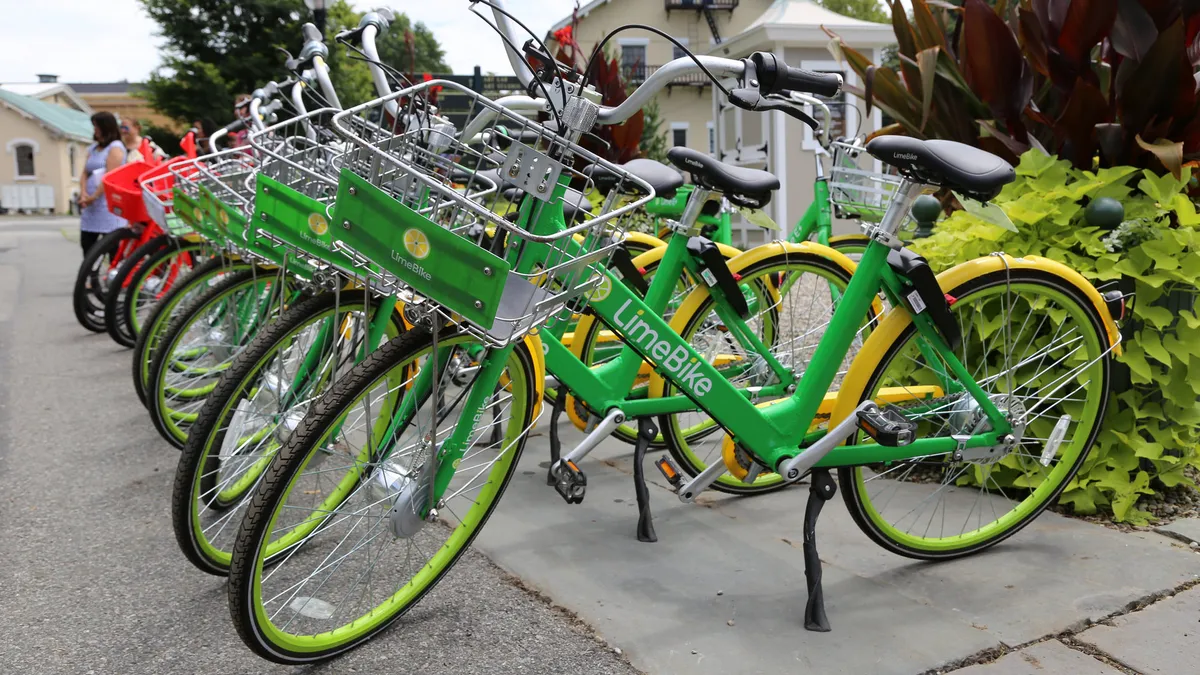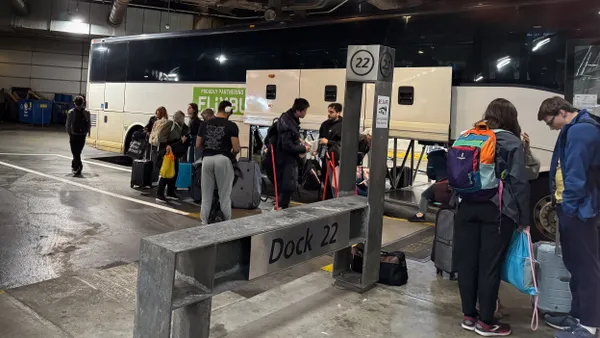UPDATED, March 4, 2019: Google Maps announced Sunday that it has added information on Lime scooter and bike locations to the "transit" tab of more than 80 cities around the world. This is an expansion of the companies' original partnership announced in December 2018. Google Maps said it will continue to add more cities.
New U.S. locations include Denver, Miami, Atlanta, Columbus, OH, Salt Lake City and Washington, DC, while new international locations include London, Madrid, Mexico City, Paris, Sydney and Vienna.
Dive Brief:
- Google Maps has partnered with Lime to begin displaying the location of dockless devices on its maps for 13 global cities: Auckland, New Zealand; Austin, TX; Baltimore; Brisbane, Australia; Dallas; Indianapolis; Los Angeles; San Diego; Oakland, CA; San Antonio; San Jose, CA; Scottsdale, AZ; and Seattle. More cities will be added in the future.
- Google Maps users will be able to see locations for nearby Lime bikes, e-bikes and scooters. They can also see how long it will take to walk to a device, an estimate of how much a trip on the device will cost and an estimate for the total trip travel time once they're on the device. Users will be able to navigate directly from Google Maps to the Lime app to unlock the device.
- The companies tout the move as a way to improve first mile/last mile portions of a longer trip in which Lime devices might fill a gap.
Dive Insight:
Google Maps generally is considered the gold standard for online and app-based mapping, but it does have its limitations. Just like some of its direct competitors, up until recently Google Maps had been a vehicle-centric service that fell short on providing users with information about alternative mobility options including transit and bike-share.
Google Maps displays stationary bike-share stations if users specifically perform a search for them, although not every station consistently appears and the icons don't indicate if bikes are available at that location. Apple Maps added a more widespread, comprehensive bike-share station search function earlier this year.
While Google Maps' partnership with Lime doesn't give users a full view of all companies' dockless devices, it's a start in the right direction for providing an all-encompassing mobility information platform. This summer Citymapper also launched partnerships with dockless service providers to pinpoint devices on its navigation app.
The pace of change within the mobility space is "white hot" right now, according to leaders at last month's LA CoMotion conference. That makes it tough for navigation app developers to keep up. They not only have to incorporate new mobility services in order to stay competitive, but they have to try to figure out which mobility business models have staying power and are worth the effort of incorporating. For example, ofo was one of the companies Citymapper initially partnered with for its dockless device mapping, but ofo has since left nearly all of its U.S. markets and is pulling back in the UK as well.
Not only is the Google-Lime partnership offering users an easier way to find alternative mobility, they're marketing it as a way to fill short gaps on the front or back end of a longer trip. That could boost dockless business from customers who previously only considered walking those short distances.












